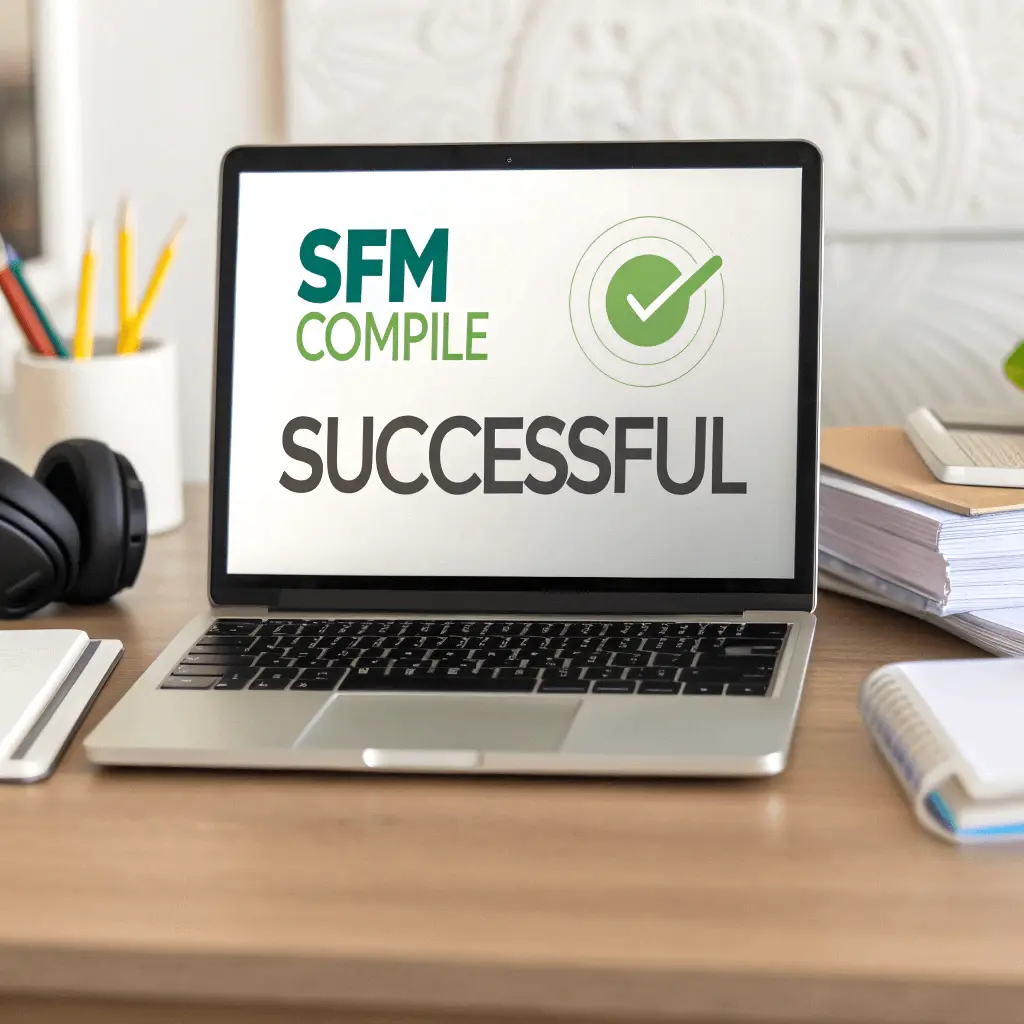When working with SFM compile, animators and content creators unlock the final step to producing stunning and polished videos from Source Filmmaker projects. Whether you’re a beginner eager to bring your animations to life or an experienced creator aiming for professional-quality results, understanding the SFM compile process is crucial for ensuring your project looks flawless, smooth, and ready for audiences. This comprehensive guide delves deep into what SFM compile entails, how to optimize it, and why it’s indispensable for any SFM user.
What is SFM Compile?
At its essence, SFM compile refers to the process of transforming your raw animation data, camera work, lighting, and audio elements created within Source Filmmaker into a finalized, playable video file. It takes your editable SFM project and converts it into a polished output, usually in video or image sequence format. Without this vital step, your work remains a collection of scattered assets and editable timelines rather than a cohesive, shareable animation.
While terms like “sfm compil,” “sfm conpile,” “sfm compi,” and “sfm compole” often appear in community discussions—sometimes due to typos or shorthand—they all fundamentally point towards this crucial compiling step within the Source Filmmaker pipeline.
The Importance of SFM Compile in Animation Production
The SFM compile stage is much more than a mere “save as video” function. It plays a pivotal role in:
- Ensuring High-Resolution Outputs: Compiling your project correctly lets you export videos in various resolutions, including HD and 4K, making your animations crisp and clear.
- Accurate Motion and Animation Rendering: Your character movements, camera angles, and special effects maintain their integrity during compilation, avoiding glitches like frame skipping.
- Audio and Visual Synchronization: Proper synchronization ensures dialogue, sound effects, and music align perfectly with the visual timeline.
- Post-Processing Effects Integration: Effects such as motion blur, depth of field, and color grading are seamlessly incorporated when you compile correctly.
Failing to properly execute SFM compile can result in a low-quality video riddled with visual artifacts, desynchronized audio, or incomplete renders.
How Does SFM Compile Work? Understanding the Workflow
1. Preparing Your Project Timeline
Before hitting compile, it is essential to finalize all elements of your project:
- Lock all animation shots to avoid accidental changes.
- Confirm that all audio tracks, including voiceovers and music, are correctly timed.
- Adjust lighting, camera angles, and effects to perfection.
This preparatory step ensures the compilation captures your creative vision without unexpected surprises.
2. Selecting Render Options and Settings
The sfm compi stage provides several configurable parameters:
- Output Format: Choose between an image sequence or direct video export (AVI, MP4).
- Resolution: Set the desired output resolution; 1080p is common, but 4K or higher can be selected for cinematic quality.
- Sampling Rate and Anti-Aliasing: Fine-tune for smoother edges and cleaner images.
- Motion Blur: Enable or disable depending on artistic preference.
Advanced users may prefer exporting an image sequence for better control and flexibility in post-processing, while others opt for direct video files for quick outputs.
3. Executing the Compile Process
Navigate in SFM to:
File → Export → Movie…
Select your chosen settings and initiate the compile. The render time varies based on scene complexity, hardware capability, and output settings.
4. Post-Processing and Final Touches
Once the base compile is complete, many creators enhance their videos further by:
- Adding voiceovers, music, or sound effects in editing software.
- Applying color correction or special effects using programs like Adobe Premiere Pro or DaVinci Resolve.
- Encoding the final file into formats suitable for platforms like YouTube (H.264 MP4).
SFMCompile Tool: The Backbone of Asset Preparation
While the SFM compile step renders your animation to video, SFMCompile (note the capital C) is a distinct yet related tool essential for preparing custom assets like models and animations within SFM.
What is SFMCompile?
SFMCompile is a specialized compilation tool designed for converting 3D models, textures, rigs, and animations into formats compatible with Source Filmmaker. This step is mandatory when animators create custom assets or modify existing ones to ensure proper integration with SFM’s engine.
Why is SFMCompile Essential?
Without SFMCompile, importing custom assets into SFM would be problematic or impossible, as the raw files wouldn’t be optimized or structured correctly. This tool helps:
- Compile Models: Guarantee that 3D models function correctly within the SFM environment.
- Compile Animations: Ensure smooth playback and manipulability of animated sequences.
- Integrate Textures and Rigs: Link assets accurately to avoid broken visuals or rigging errors.
How Does SFMCompile Work?
The process typically involves:
- Organizing Assets: All models, textures, and animations must be placed in specific folder structures.
- Running SFMCompile: Via command line or batch scripts, you initiate the compilation.
- Error Checking: The tool produces logs highlighting any issues to be fixed.
- Verifying Output: Final compiled files are saved in designated directories, ready for SFM import.
Installation and Setup of SFMCompile
Downloading and Installing
You can obtain SFMCompile from trusted community sources or modding forums. After downloading:
- Extract the files to your preferred folder.
- Install any necessary dependencies, such as Python or specific Source Engine tools.
- Configure the tool by specifying paths to your Source Filmmaker installation and assets.
Configuring for First Use
Set the directory paths for your models, textures, and SFM project. Run a test compile of a simple asset to confirm functionality, adjusting settings like output paths and compression if necessary.
Common Problems and Troubleshooting in SFMCompile
Compilation Errors
These arise due to missing files, incorrect paths, or asset incompatibility. The solution often involves carefully reviewing compile logs and correcting asset issues.
Missing Dependencies
Ensure all required software components are installed, including auxiliary tools that SFMCompile may rely on.
Asset Incompatibility
Some older or custom assets may not be fully compatible with SFMCompile. You may need to update or convert these assets before compiling.
Advanced Features of SFMCompile
Batch Compilation
Compile multiple assets simultaneously, saving significant time on large projects.
Custom Scripts
Automate complex compile processes with personalized scripts to streamline repetitive tasks.
Multi-Threaded Compilation
Utilize multiple CPU cores to speed up compilation, improving workflow efficiency.
Best Practices for Successful SFM Compile and SFMCompile Usage
- Organize Your Assets: Maintain tidy folder structures for models, textures, and animations.
- Backup Regularly: Always save backups before starting compilation to prevent data loss.
- Test Frequently: Compile smaller test projects to catch errors early.
- Monitor Hardware Usage: Avoid crashes by keeping an eye on CPU and GPU load during renders.
- Use Image Sequence Export for High Quality: This method provides maximum flexibility and reduces risk of data corruption.
Frequently Asked Questions (FAQs)
What is the difference between SFM compile and SFMCompile?
SFM compile is the process of rendering your animation project into a video, while SFMCompile is a tool used to convert custom assets like models and animations into formats compatible with Source Filmmaker.
Can I compile my SFM project directly to MP4?
While SFM can export to AVI or image sequences, MP4 export usually requires post-processing in video editing software.
Why does my compiled video have frame skipping?
Frame skipping often results from incorrect compile settings, insufficient hardware, or unfinalized timeline edits.
How do I fix errors during SFMCompile?
Check the detailed compile logs, correct missing assets or paths, and ensure all dependencies are installed.
Is batch compiling supported in SFMCompile?
Yes, batch compiling multiple assets is a key feature that helps save time.
What resolution is best for SFM compile?
It depends on your goals—1080p is standard, but 4K is preferred for cinematic quality.
Can I add post effects during SFM compile?
Basic effects are applied during compile, but advanced color grading is best done in external software.
How do I enable anti-aliasing during SFM compile?
Anti-aliasing settings are available in the compile options menu; enabling them smooths out jagged edges.
What hardware specs do I need for smooth SFM compile?
A powerful CPU and GPU, along with sufficient RAM, improve compile speed and quality.
Can SFMCompile handle custom rigs and animations?
Yes, but these assets must be properly prepared and linked before compiling.
Conclusion
Mastering SFM compile and the complementary SFMCompile tool is essential for any serious Source Filmmaker user. From ensuring high-quality, crisp final videos to compiling complex custom assets, these processes form the backbone of a successful SFM workflow. With proper preparation, understanding of settings, and troubleshooting know-how, animators can produce captivating, professional-grade animations ready for any platform.
By following the detailed steps and best practices outlined in this guide, you’ll not only avoid common pitfalls associated with sfm compil, sfm conpile, sfm compi, or sfm compole, but also unlock the full potential of your Source Filmmaker projects.

